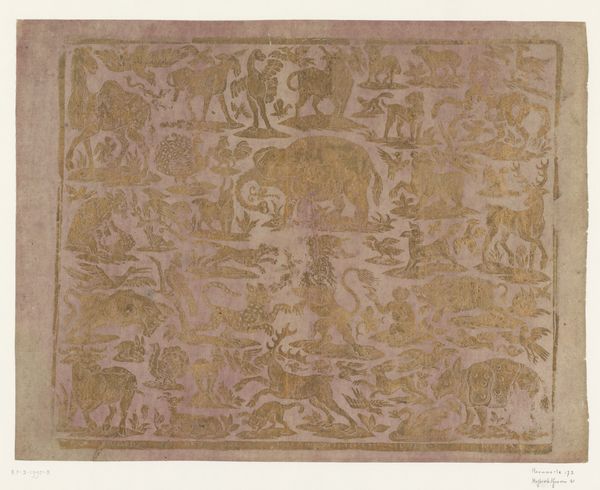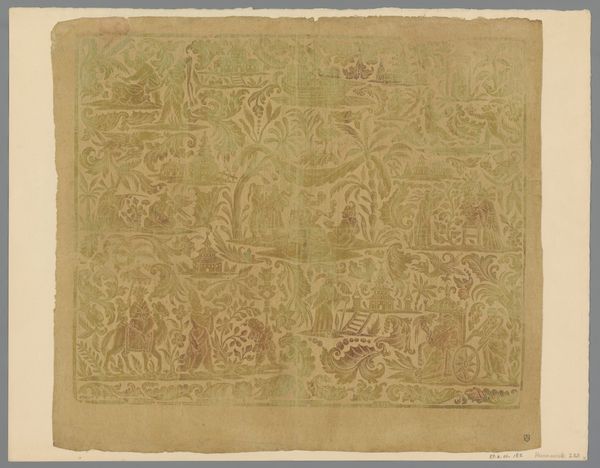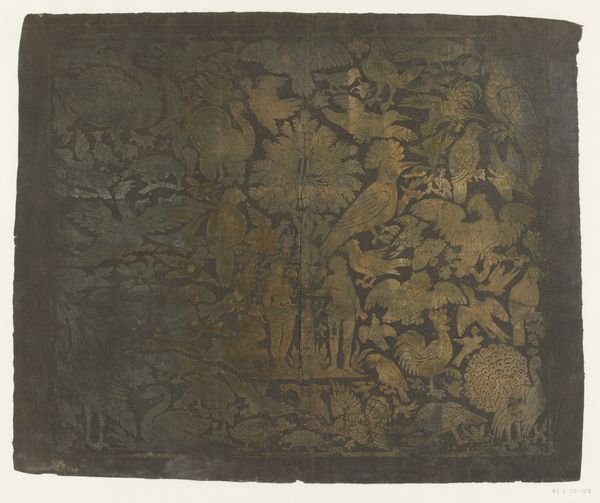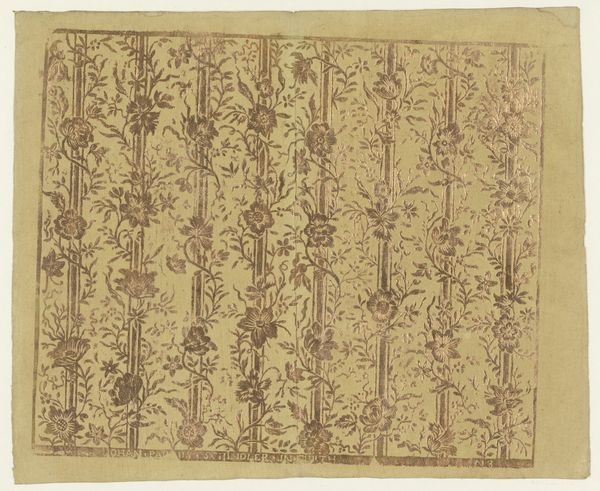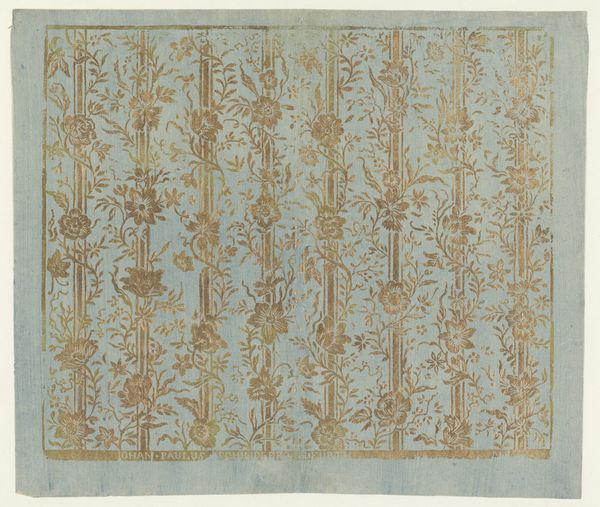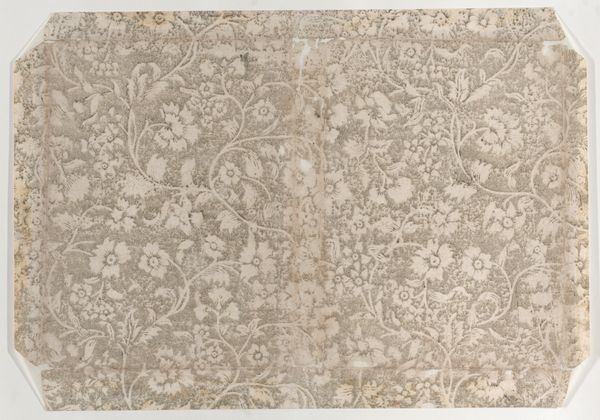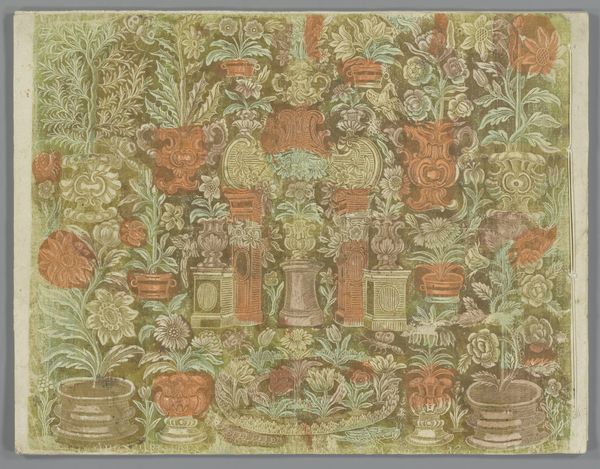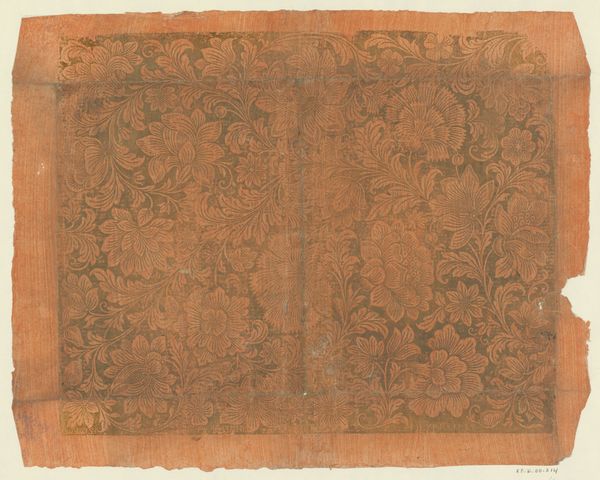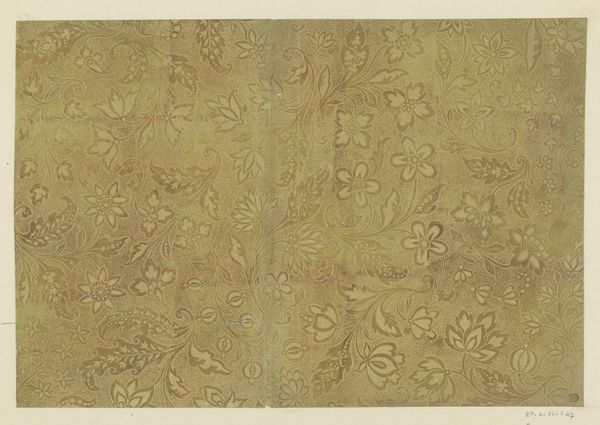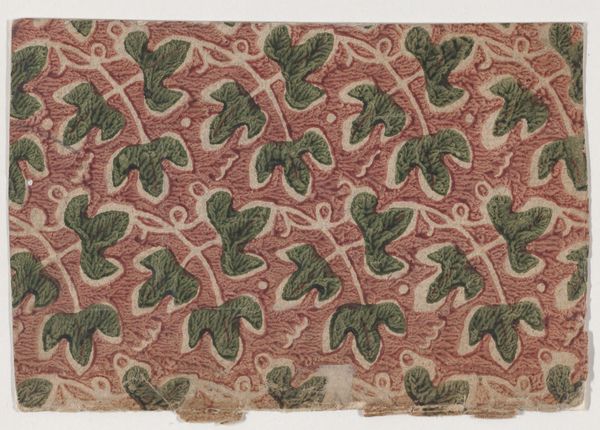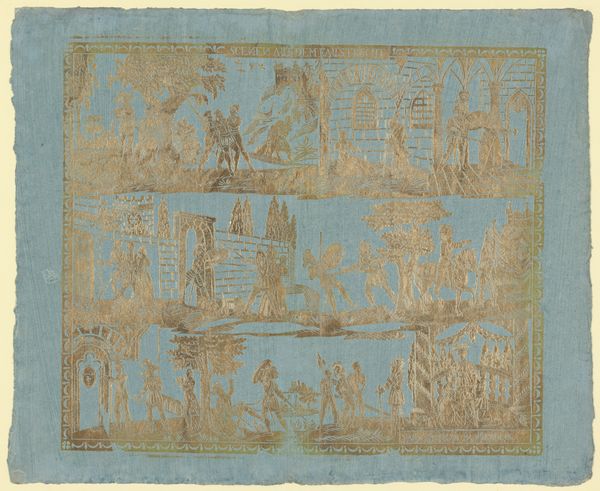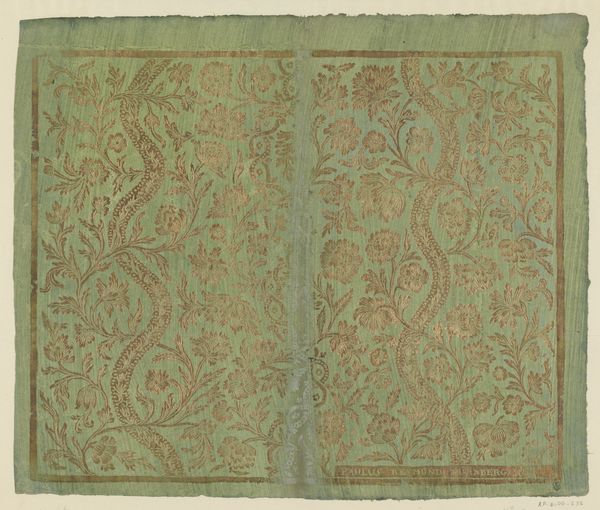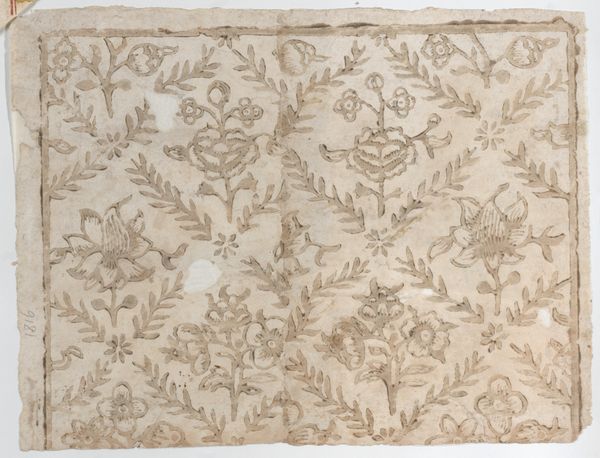
Blad met centraal Adam en Eva onder de appelboom omringd door dieren 1750 - 1794
0:00
0:00
print, woodcut, engraving
#
narrative-art
# print
#
landscape
#
figuration
#
woodcut
#
genre-painting
#
prehistoric
#
engraving
#
miniature
Dimensions: height 322 mm, width 384 mm
Copyright: Rijks Museum: Open Domain
Curator: Okay, let’s dive into this woodcut and engraving from sometime between 1750 and 1794, likely by Johann Carl Munck. It’s called "Blad met centraal Adam en Eva onder de appelboom omringd door dieren"—or, "Sheet with Adam and Eve under the apple tree surrounded by animals." Editor: Wow. It feels...overwhelming, almost claustrophobic. So many creatures crammed together. Is that intentional? Like, Paradise Lost feeling more like a very crowded zoo? Curator: Perhaps! The sheer density does create a rather different Edenic feel, doesn't it? The composition, though symmetrical with Adam and Eve central, explodes outwards with various fauna. Note the execution of the animals themselves; somewhat naively rendered, yet painstakingly detailed, particularly in the feathers. Editor: Naive is a kind word! Some of them look like the artist only heard descriptions of these animals. The peacock seems…unlikely. But you’re right about the symmetry; it anchors the piece. The tree is central as well and around it Adam and Eve standing right in front. The bodies create a connection between earth and sky; sin and paradise. Curator: Indeed. Consider the function of this work. As a print, it's accessible, replicable. Meaning, the story of the Fall, surrounded by all creation, could be distributed widely. Also it captures the sense of wonder associated with new exploration as these engravers often didn't see the subjects of the image first hand and tried to convey their grandeur. Editor: True, it’s not just about individual artistic vision, it's about the broader narrative. A reminder perhaps that everything is affected by human choices. And that, no matter how bizarrely rendered, the natural world bears witness. Curator: Yes! So the question now becomes what to make of this symbolic space filled with animal, original sin, and its distribution? Is it an allegory? Decoration? Editor: Or, perhaps a whimsical attempt to grapple with an infinitely complex story, presented with a delightfully human, slightly chaotic, touch. Either way, there is a beautiful sentimentality present in these hand drawn scenes, capturing our imagination despite of the sometimes distorted perspectives.
Comments
No comments
Be the first to comment and join the conversation on the ultimate creative platform.
